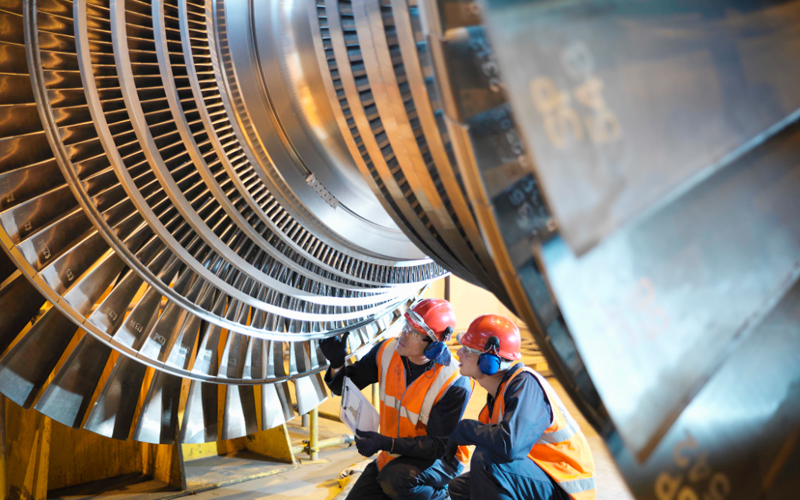Predictive maintenance (PdM) is a data-driven approach to optimising the performance of manufacturing assets. It involves gathering data from sensors embedded in manufacturing machinery, using advanced analytics to identify operational anomalies, and developing predictive models to forecast potential failures.
Traditional maintenance practices rely on scheduled interventions, condition-based corrective measures, and run-to-failure strategies. PdM, by contrast, continually assesses equipment health and predicts failures before they occur, increasing the efficiency and lifespan of industrial assets.
The need for predictive maintenance in manufacturing
Traditionally, industries implement two types of maintenance strategies – reactive and preventive maintenance. Reactive maintenance involves restoring assets after they break down, while preventive maintenance focuses on scheduling routine checks to prevent unexpected failures.
Reactive maintenance can result in unplanned downtime and higher repair costs, especially for older equipment. Preventive maintenance is effective in reducing downtime but often incurs unnecessary costs in servicing assets that are already in optimal condition.
Predictive maintenance addresses these shortcomings by leveraging data to monitor the performance and overall health of equipment in real time. Data analysis can identify critical issues, predict the likelihood of equipment failure, and estimate the time for an asset to wear out. This eliminates guesswork and facilitates proactive maintenance practices.
How does predictive maintenance work?
PdM processes run on a combination of digital technologies, including AI, the Internet of Things (IoT), and predictive analytics. Briefly, here is how PdM systems function:
- Cutting-edge sensors gather real-time data based on parameters such as sound, vibration, and temperature from manufacturing equipment
- Sensor-generated data is collected in AI-enabled asset management systems
- AI and ML algorithms analyse the data, compare it with pre-established baseline values, and trigger alerts if they identify anomalies or potential defects
Data-driven processes enable timely interventions, near-accurate failure forecasting, and better work order scheduling, driving greater efficiency in maintenance workflows.
Studies reveal that predictive maintenance solutions enable cost savings of up to 40% over reactive maintenance and 8% to 12% over preventive maintenance. Additionally, predictive maintenance can decrease equipment downtime by up to 50% while increasing machine lifespan by 20%.
Benefits of predictive maintenance in manufacturing
PdM strategies enhance efficiency and drive sustainability by optimising resource usage and limiting waste. Below are the key benefits of leveraging predictive maintenance in the manufacturing industry:
- Decreased downtime
- Increased productivity
- Optimising asset performance
- Allowing manufacturers to schedule maintenance activities during periods of less demand
- Enabling a faster response to breakdowns
- Accurately identifying fault areas, thus enabling targeted repairs
- Providing employees and technicians with better quality data to make maintenance-related decisions
- Improved metrics
- Higher Overall Equipment Effectiveness (OEE)
- Higher planned maintenance percentage (PMP)
- Reduced mean time to repair (MTTR)
- Longer mean time between failures (MTBF)
- Increased equipment lifespan
- Reduced risk of accidents
- Proactive maintenance planning
- Cost savings
Unplanned downtime is expensive. Besides disrupting production and causing workflow delays, it costs industrial manufacturers close to $50 billion annually. PdM minimises unplanned downtime by optimising asset performance and identifying faults before they manifest or escalate.
Predictive maintenance solutions increase workplace productivity in multiple ways, including –
Improved maintenance metrics are a crucial outcome of predictive maintenance. The most significant of these are -
Continual condition monitoring, real-time alerts, and timely repairs and replacements improve the functioning of industrial assets and increase their lifespan.
Predictive maintenance minimises the risk of accidents stemming from sudden outages, equipment failures, and snags in machinery, making for safer working conditions.
Predictive analytical models based on advanced ML algorithms can accurately forecast when a piece of equipment is likely to malfunction. This helps technical staff prioritise maintenance tasks and address the critical ones first.
With reduced downtime, enhanced operational efficiency, optimally functioning machinery, and fewer overall repairs, manufacturers can realise higher cost savings on maintenance activities.
Additionally, proactive maintenance practices significantly reduce the consumption of power and maintenance supplies like filters, lubricants, and replacement parts, further decreasing costs.
Implementing a predictive maintenance strategy
Implementing an effective predictive maintenance strategy in the manufacturing industry is not without challenges. Here is a step-by-step guide for eliciting the best results from your PdM strategy.
- Define your objectives
- Install the relevant technology
- Integrate the data into a maintenance management system
- Set up baselines and alerts
- Garner support
Clearly define the goals of your predictive maintenance programme. Prioritise assets that are critical to your manufacturing operations.
PdM implementation in a manufacturing unit requires IoT to connect multiple non-computer assets and enable them to transmit data in real time. Besides IoT connectivity, you will also require the appropriate sensors for your machinery. These may include vibration sensors, sonic acoustic sensors, or infrared sensors.
Make your data analytics-ready and actionable by integrating it with a centralised maintenance management system.
Establish operational baselines to serve as control values for your predictive maintenance system. Set up automated alerts to notify maintenance teams when specific parameters are misaligned with the predefined values.
There are multiple challenges in implementing predictive maintenance in manufacturing settings. These are mostly associated with data handling, employee training, and navigating infrastructure complexity.
Invest in continuous training and education to address skill gaps, maximise buy-in, and assemble a future-ready maintenance team. You may also engage a manufacturing support services partner for assistance in navigating the transformation.
How can Infosys BPM help you with manufacturing operations?
Infosys BPM offers operational support for businesses seeking to digitise and automate their manufacturing processes. Our solutions include analytics-based performance management, production planning, manufacturing quality management, and more.
Know how Infosys BPM’s manufacturing support services can help transform your maintenance practices.







